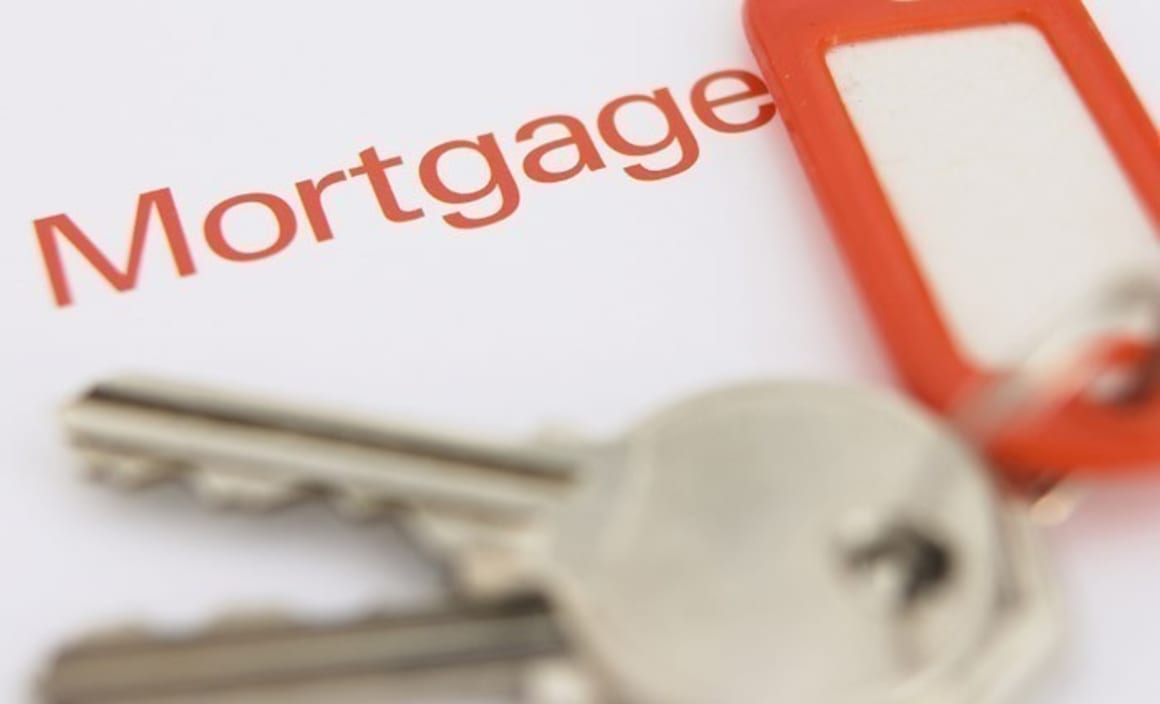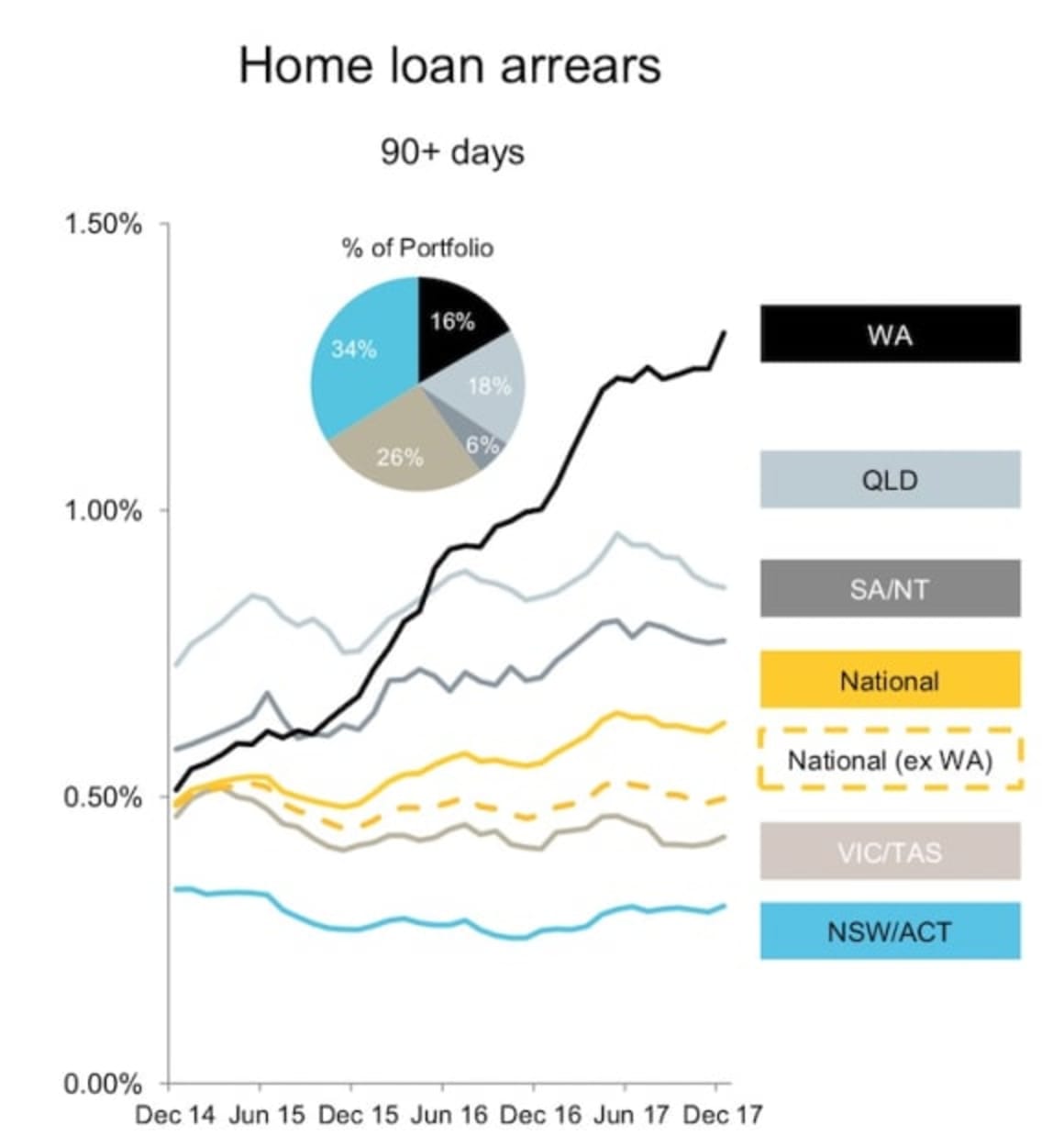CBA home loan mortgage delinquencies rise in WA

The CBA home loan arrears jumped in WA in the last six months of 2017, triggering the lender's overall bad loan book to the highest level in four years.
Australia's largest mortgage lender reported home loans 90 or more days in arrears accounted for about 0.6% of its loan book.
The proportion of bad loans in WA rose to about 1.3%, well above Queensland, the next closest mining region in terms of arrears.
Click here to enlarge.

"Loan impairment expense was $356 million, an increase of 1% on the prior comparative period," CBA said.
"The result was mainly driven by increased home loan and personal loan collective provisions, which include the impact of slightly higher home loan arrears, predominantly in WA."
The figures show the continuing fallout of the WA housing market with the proportion of bad home loans having more than doubled over the past three years.
CBA reduced its exposure to the WA market over the six-month period.
Click here to enlarge.

The balance of home loans in the state fell 0.3% to account for 16% of the bank's total home loan book.
Last August, Western Australia was noted as having the most problem home loans in Australia.
The Perth property market ended 2017 on a positive note, with December quarter data showing improvements in median prices, sales activity, listing levels and average selling days, according to REIWA President Hayden Groves.
“The Perth market found its floor and stabilised in the back half of 2017,” Mr Groves said.
Perth’s preliminary median house price increased 1.2 per cent to $516,000 in the December quarter 2017.
“Once all sales have settled, we expect the final December quarter median to lift to $520,000, which is a notable improvement on the September quarter median of $510,000.
“On an annual basis, the Perth market is very stable. We’ve observed consistent price levels between the December 2016 and 2017 quarters which is a strong signifier the market has turned a corner,” Mr Groves said.
Perth’s median unit price is $405,000 for the December 2017 quarter which is a 1.3 per cent increase on the September quarter.
“It’s encouraging to see Perth’s house and unit medians increase over the quarter because it suggests one sector hasn’t recovered at the expense of the other,” Mr Groves said.
There were 4,946 dwelling sales in Perth in the December quarter.
Mr Groves said this figure was expected to lift to 6,700 once all sales had settled, putting it significantly above the September quarter sales figure.
“Traditionally, the September quarter outperforms the December quarter, but that wasn’t the case in 2017. The December quarter is on track to record 14 per cent more sales than the September quarter,” Mr Groves said.
REIWA analysis shows the composition of sales shifted in the December quarter in Perth, with more transactions occurring above $700,000.
“We’ve observed a surge of activity in Perth’s aspirational suburbs, with buyers recognising there is good opportunity to secure a home in these areas which might have previously been considered unattainable by many,” Mr Groves said.
“This spike in sales above $700,000 has also contributed to Perth’s median house price increasing over the quarter.”
There were 13,088 properties for sale in Perth at the end of the December quarter.
Mr Groves said this was on par with the September quarter figure and six per cent less than the December 2016 quarter figure.
“There were 800 fewer listings in Perth at the end of 2017 than there was in 2016 and some 1,300 less than there were at the same time 2015. We have consistently seen stock levels decline over the last two years as the market trends towards parity,” Mr Groves said.
“Declining listing levels combined with notable improvements in sales activity has helped restore net-demand. With buyer activity increasing, stock levels are being absorbed faster,” Mr Groves said.
It was 10 days faster to sell in the December quarter than it was in the September quarter, with it taking on average 60 days to secure a sale.
“It’s been two years since it was this quick to sell in Perth. The combination of sellers’ preparedness to meet the market and buyer appetite for well-priced property has significantly shortened days-on-market,” Mr Groves said.